
3-5-8 Saiwai-cho, Fuchu-shi, Tokyo 183-8509
Tokyo university of agriculture and technology, Laboratory of veterinary physiology
TEL&FAX: 042-367-5767
E-mail: nagaokak@cc.tuat.ac.jp

The following are the main research topics in our laboratory.
If you are interested in collaboration research or our graduate school, we welcome your contact.
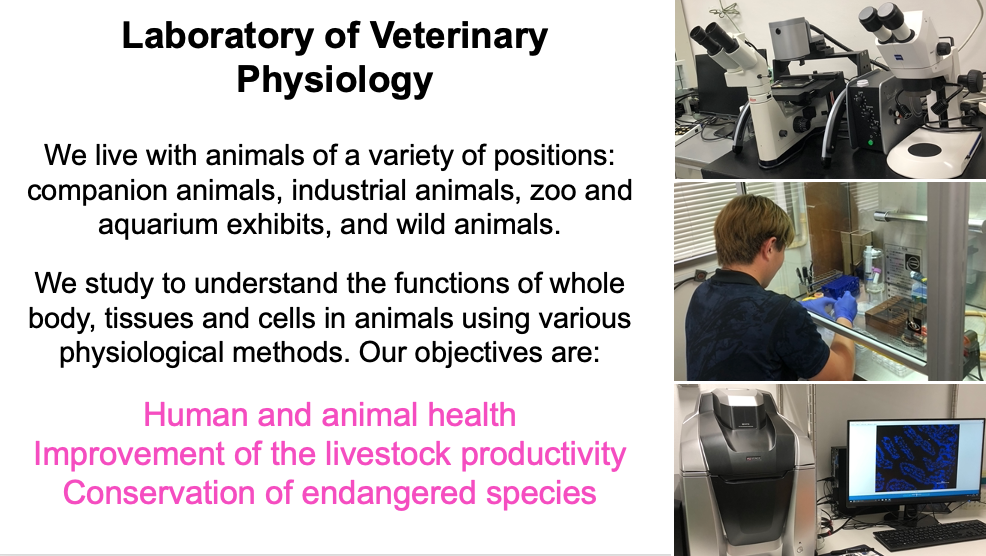
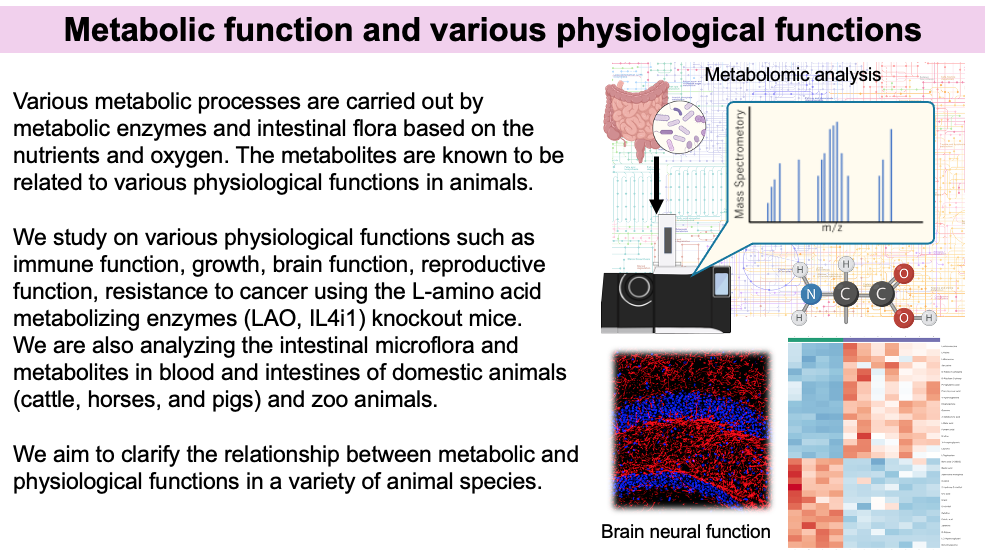
Keywords: Amino acid, Metabolic function, Immune function, Brain function, Microbiome, Cancer
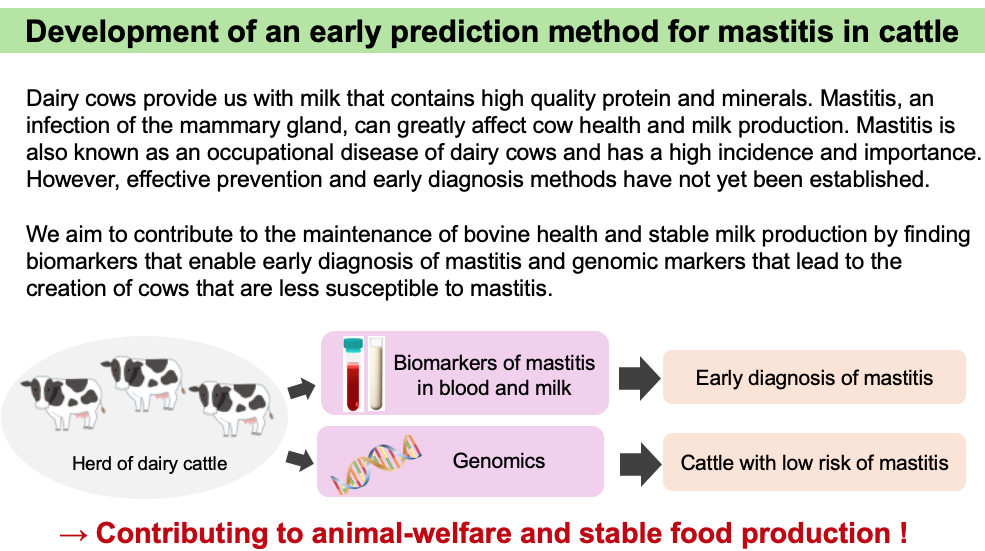
Keywords: Mastitis, Livestock, Dairy cattle, Biomarker, Breeding improvement
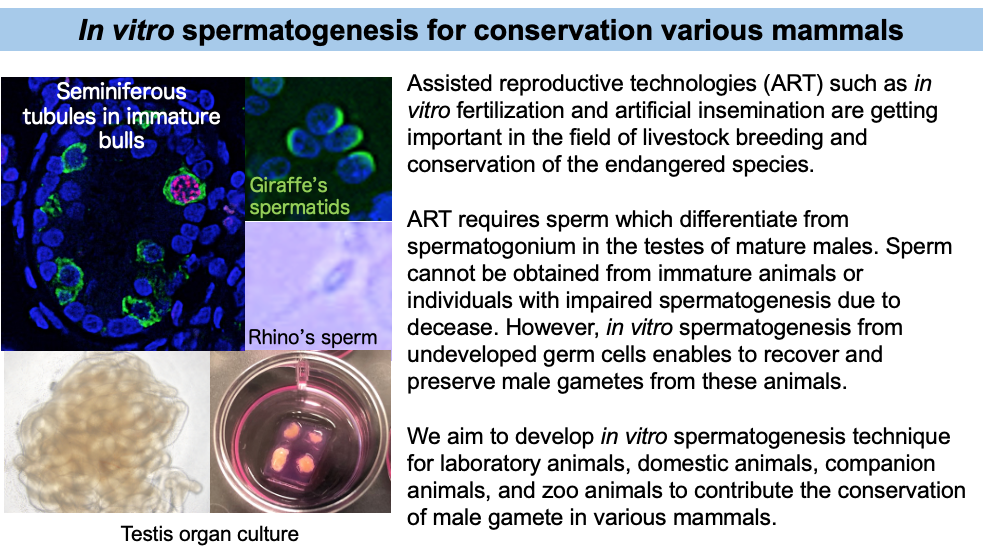
Keywords:Spermatogenesis, Endangered species, Assisted reproductive technologies, Organ culture
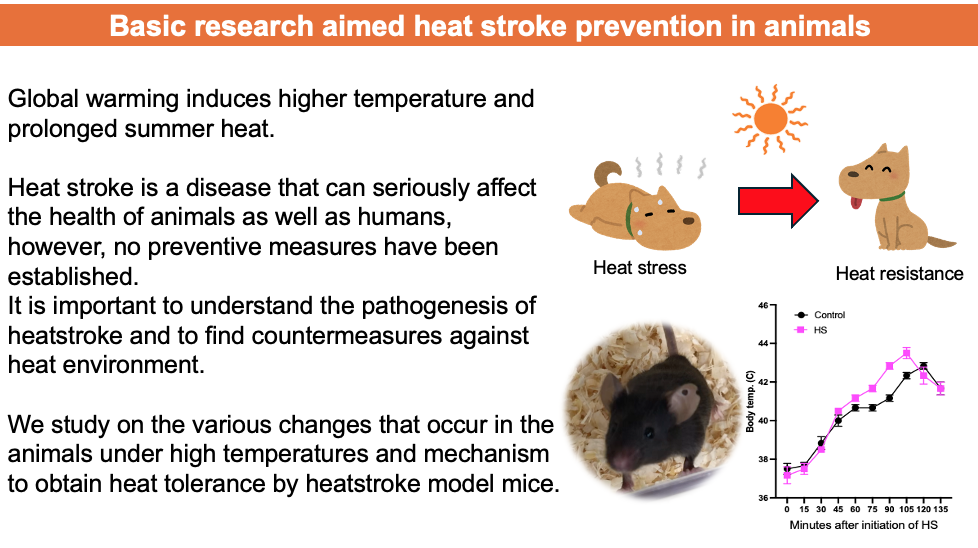
Keywords:Global warming, Heatstroke, Heat resistance, Thermoregulation